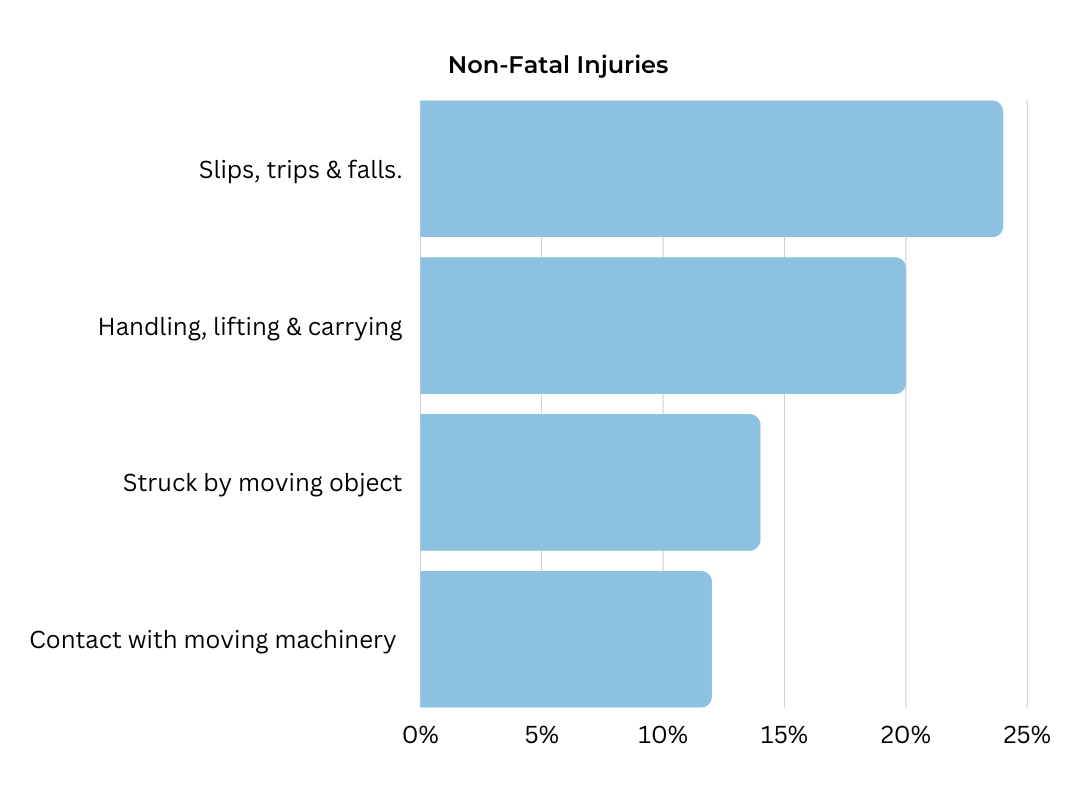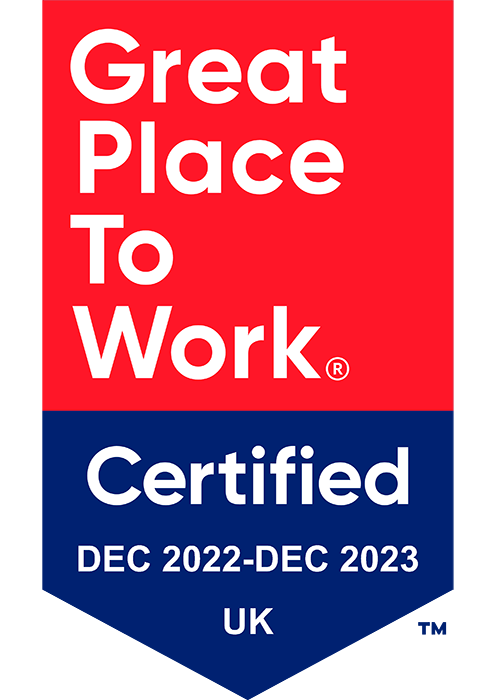
For December Latus Heath has launched an intriguing campaign that is taking a closer look into the poor working conditions at Santa’s Grotto. This week we have studied the shocking figures surrounding injuries and ill health in the manufacturing industry. Santa’s workshop faces intense pressures over Christmas time and increased pressure contributes to the ill health and injury of its workers. While Santa’s workshop may be a fictional place, it is important to consider the health, safety, and well-being of the elves who work there. The elves in Santa’s workshop are responsible for creating toys for children all over the world, and their work can involve using complex machinery and handling a variety of materials.
Manufacturing accounts for 20% of the total workplace injuries in the UK with 54,000 workers sustaining an injury every year. Moreover, 92,000 manufacturing workers were suffering from work-related ill health that was made up of musculoskeletal disorders (40%), stress anxiety or depression (40%), and other illnesses including lung disorders that contribute to the remaining 20%. In this article, we will explore some of the key health and safety concerns in the manufacturing industry and discuss how employers can promote a safe and healthy work environment.

Workplace Injuries
One of the biggest health and safety concerns in the manufacturing industry is the risk of workplace injuries and accidents. This can include everything from slips, trips, and falls to machinery accidents and exposure to hazardous materials. Data from the HSE presents that slips, trips, and falls contribute to most of these figures (24%), with injuries from lifting and handling following closely behind. To prevent these types of incidents, employers can:
- Keep floors clean and free of debris and clutter.
- Install non-slip flooring in areas where spills are likely to occur.
- Use warning signs and floor markings to alert workers to potential hazards.
- Regularly inspect floors and walkways for damage or wear and tear.
- Provide adequate lighting to ensure that workers can see where they are walking.
- Encourage workers to take their time and pay attention to their surroundings when walking.
- Provide training on safe walking practices and how to avoid slips, trips, and falls.
- Implement a system for reporting and addressing hazards in a timely manner.

Musculoskeletal disorders
Musculoskeletal problems are common among manufacturing employees and makeup 40% of ill health in the industry due to the physical demands of the job. These problems can include things like strains and sprains, as well as more chronic conditions such as carpal tunnel syndrome and lower back pain. These conditions can be caused by a variety of factors, including repetitive motions, awkward postures, and heavy lifting. They can lead to decreased productivity, increased absenteeism, and a higher risk of workplace injuries. To prevent musculoskeletal problems, manufacturing employers can:
- Invest in ergonomic equipment and tools to reduce strain on the muscles and joints.
- Provide regular breaks and encourage stretching to prevent fatigue.
- Implement proper lifting techniques to avoid overexertion and injury.
- Provide regular training on ergonomics and proper body mechanics.
- Encourage employees to speak up about any discomfort or pain they may be experiencing.
- Conduct regular evaluations of the work environment to identify potential hazards and implement solutions.
- Consider implementing a wellness program to promote overall health and prevent musculoskeletal issues.
Lung problems
Lung problems are a common concern in the manufacturing industry, with around 4,000 workers suffering from breathing or lung problems annually that have been caused or made worse by their work. Many manufacturing processes produce hazardous substances that can cause respiratory issues when inhaled. Inhaling dust and chemicals can damage the lungs and lead to conditions such as chronic bronchitis, emphysema, and asthma. In addition, some manufacturing processes also release gases that can be harmful to workers’ lungs. To reduce the risk of exposure to employees, employers can:
- Use appropriate ventilation and extraction systems to remove dust, chemicals, and fumes from the workplace.
- Provide workers with personal protective equipment (PPE), such as respirators and gloves, to protect against exposure to hazardous substances.
- Conduct regular risk assessments to identify potential sources of exposure to dust, chemicals, and fumes in the workplace.
- Implement appropriate control measures to minimize exposure to hazardous substances, such as using enclosures or local exhaust ventilation to contain dust and fumes.
- Provide training and information to workers on the hazards associated with exposure to dust, chemicals, and fumes, and on the use of PPE and other control measures.
- Regularly monitor the workplace to ensure that control measures are effective and are being used correctly.
In addition to physical health and safety, it is also important to consider the mental health and well-being of workers in the manufacturing industry. The fast-paced and often high-pressure environment of a manufacturing plant can take a toll on workers’ mental health, leading to burnout, stress, and other mental health issues. To support the mental health and well-being of their employees, employers should provide resources such as counselling services, stress management training, and opportunities for social support.
By implementing the measures discussed, Santa and his team can now help to ensure the safety and well-being of their elves and reduce the risk of accidents and injuries in the grotto. Overall, the health, safety, and well-being of workers in the manufacturing industry are crucial to the success of the industry. By taking steps to prevent workplace injuries and accidents employers can create a safe and healthy work environment that benefits everyone.


